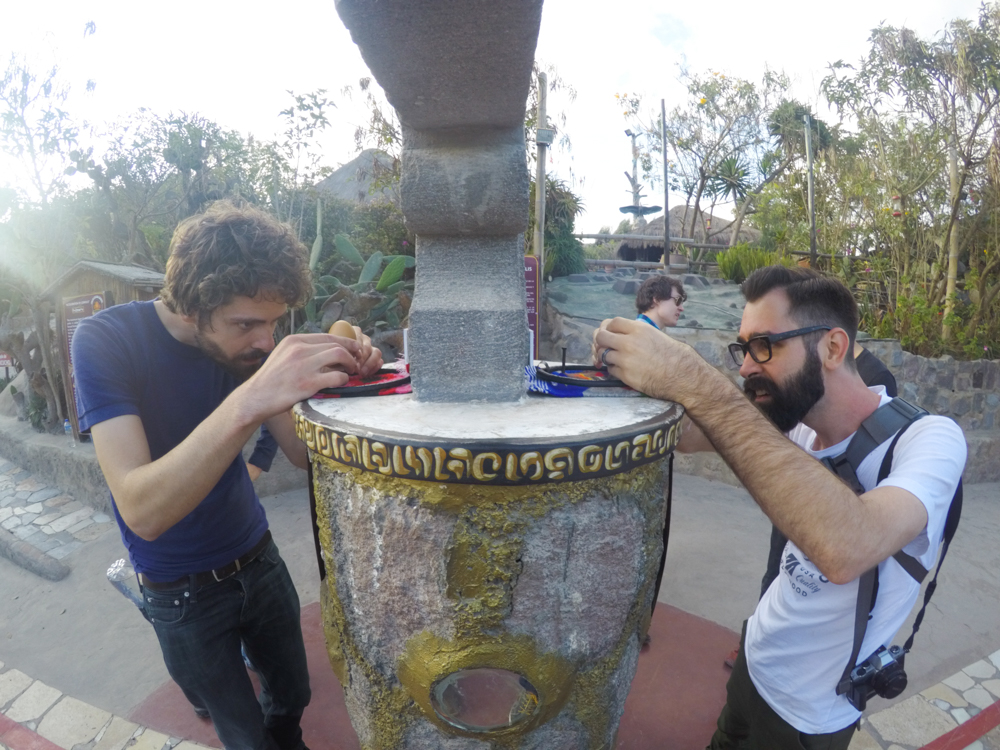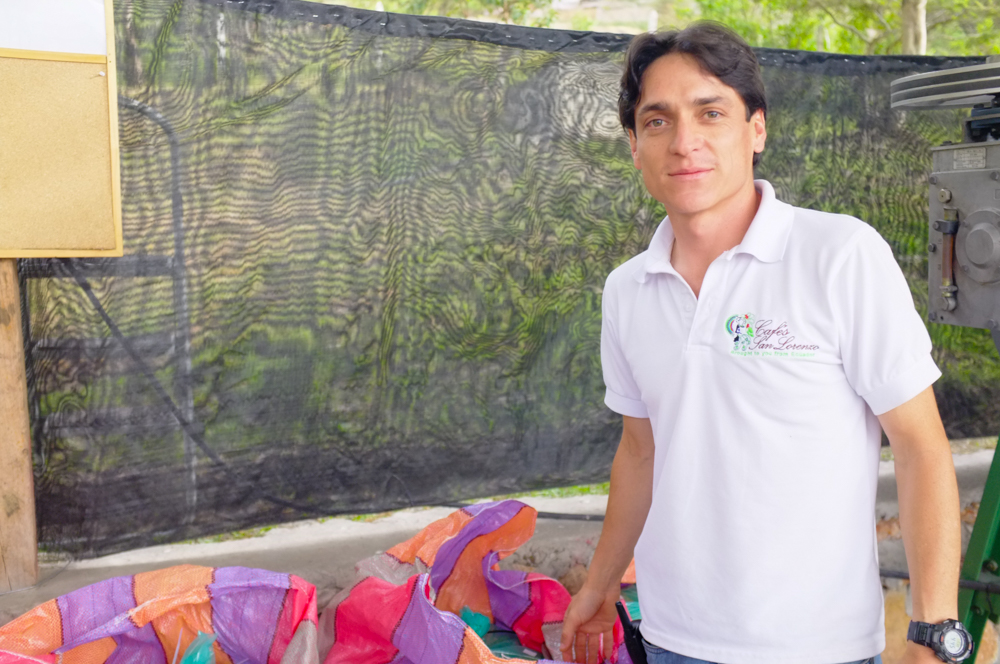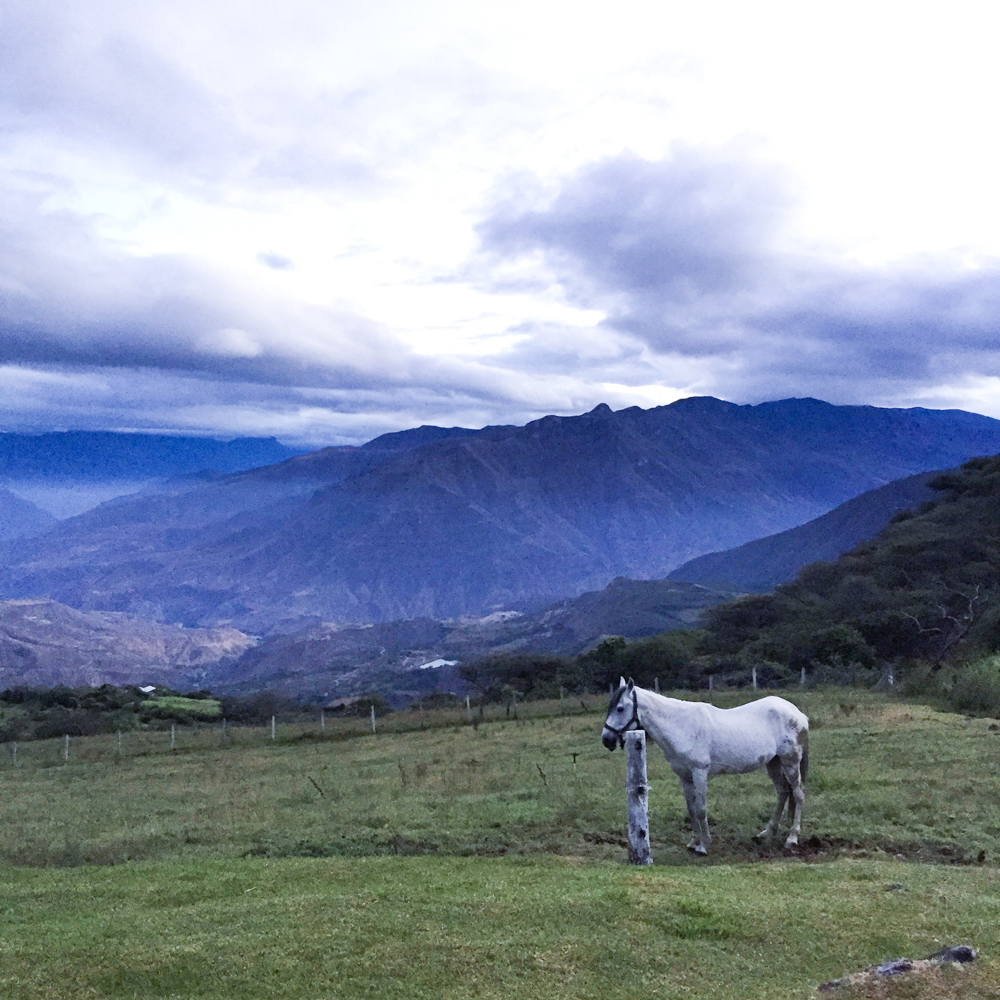

Nestled between two coffee giants, Colombia and Peru, Ecuador is a small country with a lot of coffee potential: Fantastic elevation, good varieties, and lush farmland should put this Equator-straddling South American nation at the top of everyone’s origin lists, but this is one case in which size actually might matter. The relatively limited scope of coffee growing in general, and specialty-coffee grade coffee specifically, has kept the country flying a little bit below the radar.
Café Imports bought its first half-container from Ecuador in 2012, and since then, the number of outstanding coffees has grown, alongside strong relationships with producing partners and millers who are as quality-obsessed as we are. This year, we’re excited to bring in 2 containers of microlots and another half-container of FTO-certified coffee–a sure sign that things are getting bigger and better in the region’s specialty-coffee scene.

In July of 2015, Café Imports green buyer Piero Cristiani, senior sales associate and education director Joe Marrocco, and I traveled around Ecuador along with a passel of our roaster-partners, visiting some of the intrepid and entrepreneurial farmers and beneficio managers who are actively trying to make a bigger place for Ecuadorean coffee on the specialty-coffee map. In the too-short week we had together, we were able to cup from more than 30 microlots up for offer; see and taste the results of some intensely focused variety experimentation; learn about variations in processing methodology and technology; meet several great farm dogs; and confirm first-hand that yes, you can actually balance an egg on the head of a nail at the Equator.

Some of the most exciting things we witnessed on this trip were growers’ enthusiasm and curiosity about new varieties: From experimentation with SL-28 transplanted from Kenya; to harvests of a new Ecuador-specific variety called Sidra, which is only in its first, second, or third generation at most of its host farms–we were able to compare different processes’ effect on single varieties, as well as different varieties processed identically and grown on different parts of the same farm, ostensibly developing characteristics inherent to their type.


We visited Henry and Verena Gaibor on their multi-farm property in La Perla, Nanegal, and were treated to a tour of their different lots (Finca Maputo and Finca Hakuna Matata will be familiar to fans of Cafe Imports’s Ecuador offerings; coffees from both will be back this year), walking through the variety-specific lots bursting with healthy Typica, SL-28, Bourbon, Kaffa, and Caturra trees. Following Henry is quite a feat: He’s as fast a walker as he is a talker, and we scuttled along behind him listening to the story of how he and Verena met in Burundi, where they were both working with Doctors Without Borders. Back up by the house, we inspected the parabolic drying system and small mechanical dryer the Gaibors employ, while making fast friends with the family dog, Rex.


A few days later, we sleepily shuffled onto a short flight to Cuenca town, and watched the landscape change on a long drive up winding mountainsides to Hacienda La Papaya: the farm and guest houses owned and operated by Juan Pena. Don Juan (which is a very fitting descriptor, especially if you catch the ray of sunshine in his wide smile) is a multi-generation farmer, but he’s very new to coffee: A former long-stem-rose producer, he started experimenting with coffee plants 5 years ago, when disastrous weather struck and wiped out his flower fields. Turning entirely to coffee, he has worked to develop as healthy, hardy, and horticulturally intentional a farm as possible, with a very well-nurtured plant nursery and a “garden of inputs” on the property. (The “inputs garden” is something new on me: He has coffee trees planted several yards apart and labeled with the fertilizer inputs they’re given, to track the impact of the nutrients on growth and cherry development. You might not find it surprising to hear that the most purely chemical of the fertilizers had created the weakest and saddest looking tree…)

 Of course, our group was also able to enjoy the beauty of the country, and the pleasure of each other’s company: We took a side jaunt to the “real” Equator (identified since the advent of GPS technology, correcting a case of mistaken identity that has caused there to be dueling tourist traps), drank enough blackberry juice to have purple teeth, hand-brewed coffee at 1900 meters for each other, and temporarily shared a bedroom with a pair of curious chickens–at least Hadassah from Square One Coffee and I did, anyway.
Of course, our group was also able to enjoy the beauty of the country, and the pleasure of each other’s company: We took a side jaunt to the “real” Equator (identified since the advent of GPS technology, correcting a case of mistaken identity that has caused there to be dueling tourist traps), drank enough blackberry juice to have purple teeth, hand-brewed coffee at 1900 meters for each other, and temporarily shared a bedroom with a pair of curious chickens–at least Hadassah from Square One Coffee and I did, anyway.

I’ve always liked to think that great things come in small packages (because I’m a pretty small package myself), but Ecuador’s small but mighty, and mightily growing specialty-coffee industry proves that old adage all over again. We hope to see even more coffees from these beautiful farms (and more) next year, but for right now, sit back, and enjoy the fresh crop of coffees that have just arrived.
– Meister
For more information about Meister, click here.
For a photo album from Meister’s trip to Ecuador, click here (photos by Joe Marrocco)

